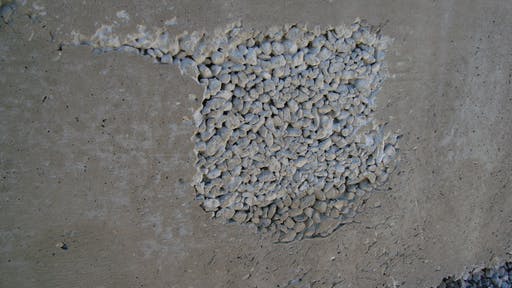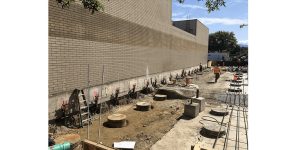How Honeycombing Concrete Enhances Structural Integrity?
3 min read
In the realm of construction, the strength and stability of foundations are paramount to the longevity and safety of buildings. Honeycombing concrete, with its unique properties and aesthetic appeal, plays a significant role in enhancing structural integrity. This exploration delves into the ways honeycombing concrete contributes to building stronger foundations, ensuring the durability and resilience of structures in various architectural endeavors.
Understanding Honeycombing Concrete
Honeycombing concrete, also known as exposed aggregate concrete, is a technique where the surface layer of concrete is removed to reveal the aggregate beneath. This process exposes the natural textures, colors, and patterns of the aggregates, creating a visually appealing finish with enhanced structural properties.
Reinforcing Foundations with Honeycombing Concrete
Increased Bond Strength: The removal of the surface layer in honeycombing concrete exposes a greater surface area of aggregates, facilitating stronger bonding between the concrete matrix and the aggregates. This increased bond strength enhances the overall stability and load-bearing capacity of foundations, ensuring they can withstand the forces exerted upon them.
Improved Resistance to Cracking: Cracks in concrete foundations can compromise structural integrity and lead to costly repairs. Honeycombing concrete, with its denser composition and enhanced bond strength, exhibits improved resistance to cracking, reducing the risk of structural damage and extending the lifespan of foundations.
Enhanced Load Distribution: The textured surface of honeycombing concrete provides a more uniform distribution of loads across the foundation, minimizing stress concentrations and preventing localized failures. This ensures that the weight of the structure is evenly distributed, mitigating the risk of settlement or subsidence over time.
Applications in Foundation Construction
Footings and Slabs: Honeycombing concrete is commonly used in the construction of footings and slabs, where its enhanced structural properties help distribute the weight of the building and provide a stable base for vertical loads. Whether in residential, commercial, or industrial construction, honeycombing concrete foundations offer reliability and peace of mind to builders and occupants alike.
Retaining Walls: Retaining walls play a crucial role in supporting earth and preventing soil erosion in landscapes with varying elevations. Honeycombing concrete provides a durable and aesthetically pleasing solution for constructing retaining walls, ensuring they withstand the lateral pressure exerted by soil while adding visual interest to outdoor spaces.
Bridge Abutments and Piers: In infrastructure projects such as bridge construction, the integrity of foundations is of utmost importance. Honeycombing concrete offers a robust solution for building bridge abutments and piers, where its enhanced strength and resistance to environmental factors ensure the longevity and safety of critical infrastructure.
Conclusion:
Honeycombing Concrete emerges as a valuable ally in the quest for building stronger foundations. By enhancing bond strength, improving resistance to cracking, and facilitating more uniform load distribution, honeycombing concrete ensures the durability and resilience of structures in various construction applications. Whether used in footings, retaining walls, or bridge abutments, honeycombing concrete stands as a testament to the enduring importance of structural integrity in the built environment. As architects, engineers, and builders continue to innovate and push the boundaries of construction practices, honeycombing concrete remains a cornerstone of strength and stability, laying the groundwork for a safer and more resilient future.




